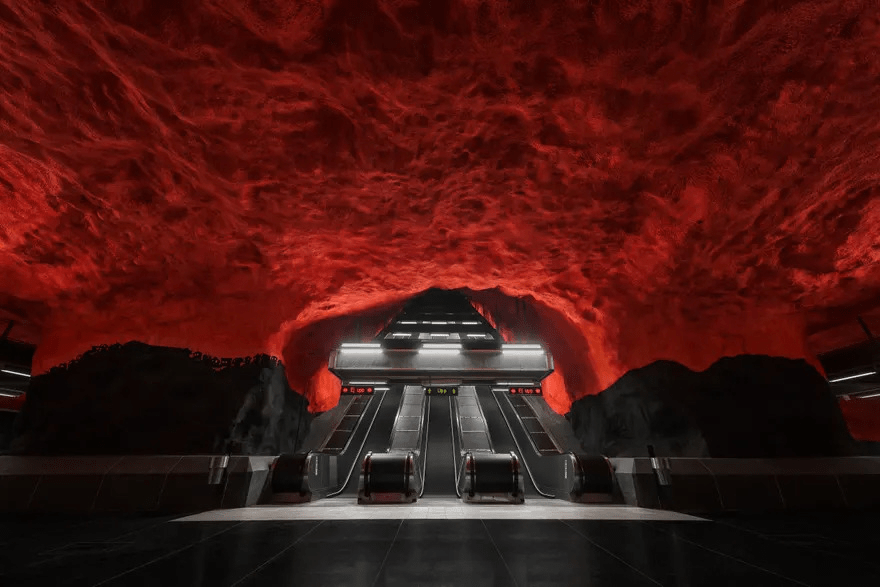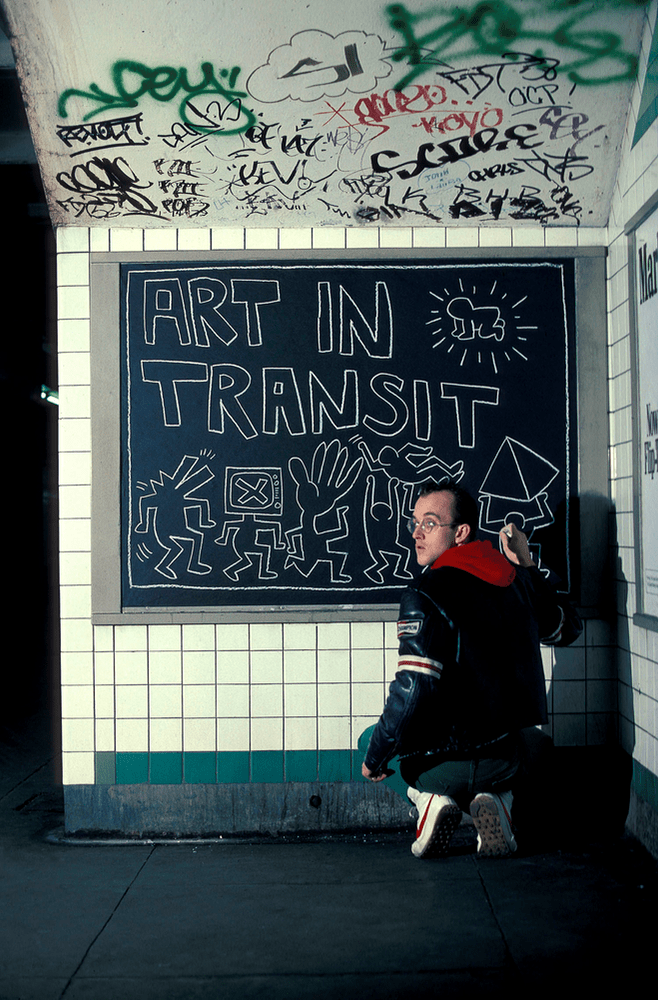In simple terms, public art is art in public spaces. But why are we talking about it? While public art might be a specific art genre with its own professional and critical discourse, its foremost purpose is to be visually and physically accessible to the public at large! No guards, no tickets, no bulletproof glass – art that is just there for us. How radical!

If you live in a fast-paced metropolis, travelling can be a chore that takes you from one place to another. But once upon a time, before the grandeur of travel was replaced by glossy #travelgoals, pioneers and builders of transport stations seemed to agree with the famous American essayist Ralph Waldo Emerson when he said, “It’s not the destination (that mattered), it’s the journey.”

In keeping with the spirit of journeys, let us take one under the world in subway art!
1. The New York Subway
It is only fitting that we open our list with Keith Haring’s graffiti art at the famed New York subway from the 80s. Often characterised as an embodiment of the decade’s street art, and New York’s hip hop and urban energy, Haring’s subway drawings stand among his most well-known and celebrated works.

His canvas? Large black panels of matte paper at the subway station awaiting new advertisements. Haring would pick up a chalk and begin drawing until the next subway car arrived. These artworks were quick and soon became performance pieces where commuters would stop by and ask the artist what it was all about.
His response? “You don’t have to know anything about art to appreciate it.”
2. Stockholm Subway
The Stockholm subway is a thing of beauty – known as the world’s longest art gallery (!!) all 110 kms of it are covered with artworks by more than 150 artists. Started in the 1950s, these underground stations have murals painted by Sweden’s most heralded artists for commuters to have a new art experience at every station! We hear they even organise guided art walks every summer.

Built in 1973, the Stadion subway station, for instance, was one of the first cave stations (a daunting concept at the time). Painted by artists Åke Pallarp and Enno Hallek, the ethereal rainbow amidst the calming blue serves as a reminder of the sky not far above. Created as an homage to The Stockholm Olympic Stadium nearby it serendipitously invites its commuters to another athletics field that hosts the Stockholm Pride festival!
3. The Moscow Metro
The Moscow Metro began operating in 1935 and was one of the more extravagant architectural projects undertaken during the Stalinist era of the Soviet Union to project its industrial and cultural superiority. These stations which were to be imbued with the sense of a ‘glorious past’ and a ‘utopian future’ were decorated with stucco work, bas-reliefs, friezes, marble and bronze statues, stained-glass windows and mosaics in Byzantine style.


Although newer stations built after this era were devoid of such an exhibition, it still retained some of the older facades which continue to capture a commuter’s imagination, giving them an experience both of the new and the old.
4. Formosa Boulevard, Taiwan
Inaugurated in 2008, this metro station at Kaohsiung, Taiwan is said to have transformed the largely industrial town into a centre of creativity. Its artist, Narcissus Quagliata envisioned this space to be “the first thing in Kaohsiung that is entirely useless. It’s intended to be beautiful, and that’s it.”

Art for art’s sake! We love it because the result of this endeavour led to Taiwan housing one of the world’s most ethereal metro stations with a dome, or as it is called the Dome of Light made of 1,152 hand-painted glass panels, with themes ranging from the political to the metaphysical. That’s one way to turn a drab commute into one of wonder and delight.
5. MTR, Hong Kong
When we speak of art, could Hong Kong be far behind? If you visit the official Mass Transit Railway, Hongkong page you will find a very clear vision – “inspiration at every station.” The team behind MTR, Hong Kong has been committed to this vision since 1998, providing an exhibition space to new sculptures, installations and mosaics each year!


The stations claim to have over 70 works of art by talented local and international artists. A true community gallery where the artwork, artists and community can interact everyday on the go!
And with that we conclude our short trip across the ‘underworld’ in subway art! We can’t think of anything more exciting than for art to carry us through as we journey from one place to another. Would you like to see more public art in your town or city? Tell us in the comments below!




